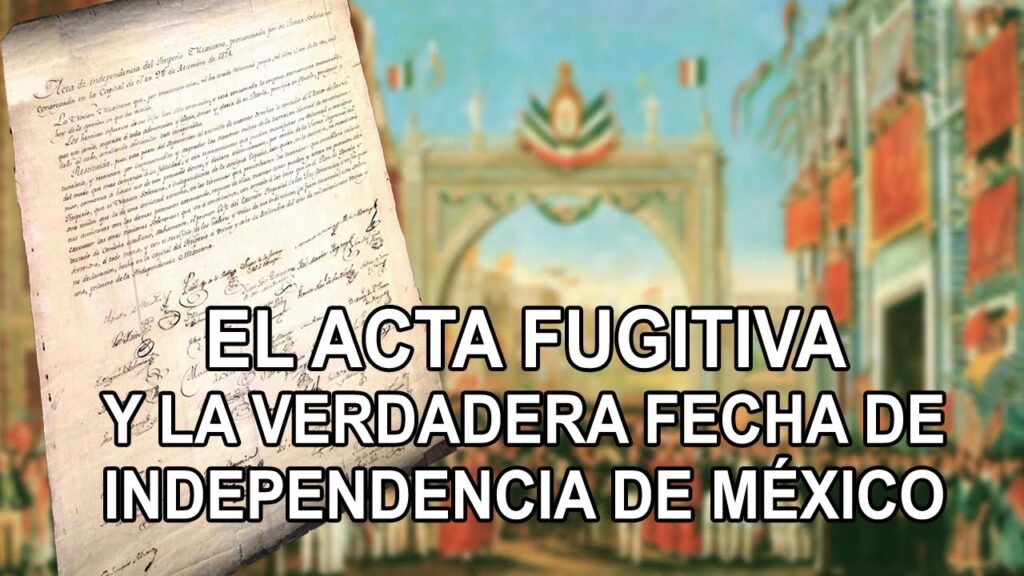The Tragic Fate of Mexico’s Declaration of Independence: Fire and Theft
The hallowed document that marked the birth of Mexico as an independent nation met a fate as tumultuous as the revolutionary period from which it emerged. Crafted in the early 19th century, Mexico’s original Declaration of Independence signified the end of three centuries of Spanish colonial rule. However, unlike other historical documents of its significance, Mexico’s Declaration did not survive the passage of time unscathed. It suffered from both intentional and accidental acts that nearly erased it from history, rendering the actual document a relic shrouded in mystery and loss.
In 1821, when the original document was drafted, it was a beacon of victory for insurgents who had fought for over a decade to free Mexico from Spanish dominion. Yet, rather than being secured in a vault or museum, the Declaration faced neglect. It is believed that at some point during the 19th century it was inadvertently damaged by fire. This unfortunate incident was a prelude to the document’s further misfortunes, which saw its resilience tested by human hands rather than the ravages of time.
The faded and brittle pages of Mexico’s Declaration of Independence eventually fell victim to yet another catastrophic event—this time in the form of theft. In the 20th century, historical thieves, recognizing the document’s significance and value, saw an opportunity for enrichment. As a result, they removed it from its rightful place among the nation’s treasured archives. The theft dealt a blow to Mexico’s cultural patrimony, propelling the Declaration into the depths of the black market where its precise whereabouts would become obscured, its fragments scattered across the globe.
Historical Treasures Lost: The Illegal Sale and Trafficking of Mexico’s Independence Act
The Independence Act of Mexico, a pivotal document marking the country’s liberation from Spanish rule, represents not only a keystone of Mexican national identity but also an invaluable piece of the world’s historical heritage. Regrettably, the clandestine sale and illicit distribution of such artifacts have ensnared this monumental document into murky waters. Unscrupulous collectors and criminal networks often forge and trade these precious items, undermining the cultural patrimony of Mexico and robbing the people of their historical narrative and pride.
As the black market for historical documents continues to thrive, the theft and illegal exportation of Mexico’s Independence Act serve as a stark reminder of the vulnerability of cultural assets. Globally, nations struggle to prevent the looting and smuggling of their ancestral treasures, and the plight of Mexico’s Independence Act underscores a broader issue: the need for stronger international cooperation and stringent legislation to protect the relics of human history from disappearing into private collections.
The loss of such a critical document to illegal trafficking transcends mere monetary value—it is a blow to historical preservation and accessibility. As these documents vanish into the shadows, historians, researchers, and the public lose the tangible connections to a past era that forms the bedrock of contemporary Mexican society. The continued trafficking of the Independence Act not only dwindles the reservoir of historical knowledge but also raises poignant questions about the role of collective memory in shaping a nation’s future.
Protecting Mexico’s Cultural Heritage: The Battle Against Oceanic Smuggling of the Independence Act
The Independence Act of Mexico, a pivotal document in the nation’s history, is not only a symbol of freedom but also an irreplaceable piece of cultural heritage. Unfortunately, this treasure has faced threats beyond the usual wear and tear of time: oceanic smuggling. Illegal trafficking of artifacts via the sea is a cunning challenge to authorities, as smugglers exploit vast and loosely monitored marine expanses to move stolen goods undetected.
Smuggling such cherished relics is more than a crime; it’s an assault on the country’s soul and identity. The Independence Act, as with many other historical artifacts, tells a story crucial to the Mexican identity. Efforts to safeguard this document have been intensified, involving cooperation between national cultural institutions and international organizations dedicated to preserving humanity’s collective history. Strengthening maritime security is a complex, yet vital part of this ongoing cultural war.
Technology plays a crucial role in the surveillance and recovery of smuggled items. Innovations in underwater drones, coupled with advanced satellite tracking systems, are turning the tide in favor of preservation. These high-tech solutions allow for real-time monitoring of suspect vessels and help in narrowing down search areas when artifacts go missing, making it increasingly difficult for smugglers to operate unnoticed.
Local empowerment is also a critical strategy in this fight. By educating and involving coastal communities in the importance of their cultural heritage, the front lines of defense against smuggling are not just law enforcement but also the residents themselves. Local fishermen and tour operators serve as the eyes and ears on the water, often proving instrumental in identifying and reporting suspicious activities. Community workshops and campaigns aim to instill a sense of pride and responsibility towards local history and artifacts.
In an era where cultural heritage faces threats from all directions, Mexico continues to battle courageously against those who seek to steal a piece of its soul. The smuggling of the Independence Act is but one example of the broader efforts to protect these vital links to the past. And as this struggle occurs in the dark undercurrents and secretive coves along the country’s vast coastline, the commitment to preserving Mexico’s cultural legacy remains strong and unyielding.
Unveiling The Dark Side of History: Mexico’s Independence Act Through Fire, Theft, and Black Market Sales
When we think of Mexico’s quest for independence, images of heroic battles and the iconic “Cry of Dolores” often jump to the forefront. However, less known are the turbulent fates that befell the actual documents declaring Mexico’s freedom. Over the years, the physical Independence Act has survived not just the passage of time but a series of dramatic events that include fire, theft, and clandestine sales.
In an event as fiery as the revolutionary spirit it symbolizes, the Act faced one of its first threats in 1823. A conflagration engulfed the parliament building where the document was kept. Miraculously, the Independence Act emerged relatively unscathed, a survivor amidst ashes. This event transmuted the parchment into more than mere words—it became a symbol of the undying resilience of Mexican spirit.
However, the perils were far from over. The Act fell prey to thievery in 1830. Stolen from its haven, it reappeared mysteriously twenty-five years later, only to be stolen again! Each disappearance and return added to the Act’s almost mythic reputation. Rumors swirled that unscrupulous collectors sought to possess the document, not for its historical value, but as a trophy in a shadowy world where national pride and material wealth collided.
The black market for historical documents whispered its shadowy tendrils into Mexico’s history, and the Independence Act was no exception. It is believed that during its periods of absence, the document exchanged hands in hushed transactions, contributing to a burgeoning underbelly of artifact trafficking. The Act’s travels through these illicit networks remain largely untraced but are thought to have crossed borders and oceans.
Notwithstanding its tumultuous past, the Independence Act now rests within the hallowed walls of Mexico’s National Archive. Its presence there is a testament to the country’s rigorous efforts to reclaim and preserve its national treasures. However, scars of the past cannot be erased, and the Act carries with it a narrative as complex and fraught as the history of the nation it helped birth.



